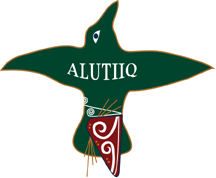 Building Bridges for Student Success Building Bridges for Student Success
Engaging Kodiak's Students and Communities Through Place-Based Educational Practices References
Assembly of Alaska Native Educator. (1998). Alaska standards for
culturally responsive schools. Fairbanks: Alaska Native Knowledge Network,
University
of Alaska Fairbanks.
A Report to the Annenberg Rural Challenge. (1999).
Living and learning in rural schools and communities. Cambridge: Harvard
Graduate School of
Education.
Austin, T. (1994). Changing the view: Student-led parent conferences.
Portsmouth: Heinemann.
Bank, J. A. (1993 ). The Canon Debate, Knowledge
Construction, and Multicultural Education. Educational Researcher, 22(5),
4-14.
Barnhardt, R. & Tonsmeire, J. K. (1988). Lessons taught, lessons learned:
Teacher's
reflections on schooling in rural Alaska. Fairbanks: Alaska Native Knowledge
Network, University of Alaska Fairbanks.
Brooks, J. G. & Brooks, M. G. (1999).
In search of understanding the case for constructivist classrooms. Alexandria:
Association for Supervision and
Curriculum Development.
Cajete, G. A. (1999). Igniting the sparkle:
An indigenous science education model. Skyand: Kivaki Press.
Darling-Hammond,
L. (1997). The right to learn: A blueprint for creating schools that work.
San Francisco: Jossey-Bass, Inc.
Delpit. L. (1995). Other people's children:
Cultural conflict in the dassroom. New York: The New Press.
Dewey, J. (1938).
Experience and education. New York: Touchstone.
Elder, J. (1994). Stories
in the land: A place-based environmental education anthology. Great Barrington:
The Orion Society.
Gardner, H. (1993). Multiple intelligences: the theory in
practice. New York: BasicBooks.
Gruchow, P. (1995). Grass
roots: The universe of home. Minneapolis: Milkweed Editions.
Hass, T. & Nachtigal,
P. (1998). Place value. Charleston: Appalachia Educational Laboratory, Inc.
Henley, T. (1989). Rediscovery: Ancient pathways.
new
directions. Edmonton: Lone Pine Publishing.
Kawagley,
A. O. (1995). A Yupiaq worldview: A pathway to ecology and spirit. Prospect
Heights: Waveland
Press.
Kawagley, A. O. (1999). Presentation during
staff meeting of the Alaska Rural Systemic Initiative.
Fairbanks.
Kohl, H. (1991). I won't learn from you! Minneapolis: Milkweed Editions.
Kohn, A. (1999). The schools our children
deserve: Moving beyond tradtional dassrooms and "tough standards." New
York: Houghton Mifflin Company.
Lipka, J., Mohatt, G. V. & Ciulistet
Group (1998). Transforming the culture of schools. New York: Lawrence
Eribaum and Associates.
Madison, C. & Yarber, Y. (Eds.) (1986).
Peter John: Minto, a biography. Fairbanks:
Spirit Mountain Press.
Meier, D. (1995).
The power of their ideas. Boston: Beacon Press.
Orr, D. W. (1994). Earth in
mind: On education, environment, and the human prospect.
Washington: Island Press.
Peddiwell, J. A. (1939). The saber-tooth
curriculum. New York: McGraw-Hill,
Inc.
Ravitch, Diane. (1991-92). A Culture
in Common. Educational Leadership. (Dec/Jan),
8-11.
Smith, G. A. & Williams, D.
R. (Eds.). (1999). Ecological Education
in Action: On
weaving education. culture. and environment.
Albany: State University
of New York Press.
Suzuki, D. (1992).
Wisdom of the elders. New York: Bantam Books.
Theobald, P. (1997). Teaching
the commons: Place, pride, and the renewal of
community. Boulder:
Westview Press.
Warren, K., Sakofs.
M. & Hunt, J. S.
(Eds.). (1995). The Theory
of Experiential Education. Boulder: Association
for Experiential Education.
Wiggins, G. & McTighe, J. (1998). Understanding
by Design. Alexandria: Association
for Supervision and Curriculum Development.
Willis, S. & Mann, L. (2000).
Differentiating instruction: Finding manageable ways to meet
individual needs. Curriculum
Update, (Winter), 1-7.
Young, T.W. (1990). Public alternative
education: Options and choice
for today's school. New
York Teachers
College
Press. Table of Contents
|